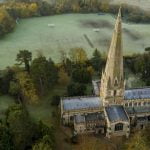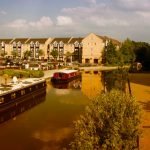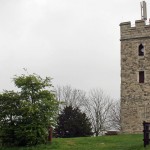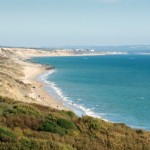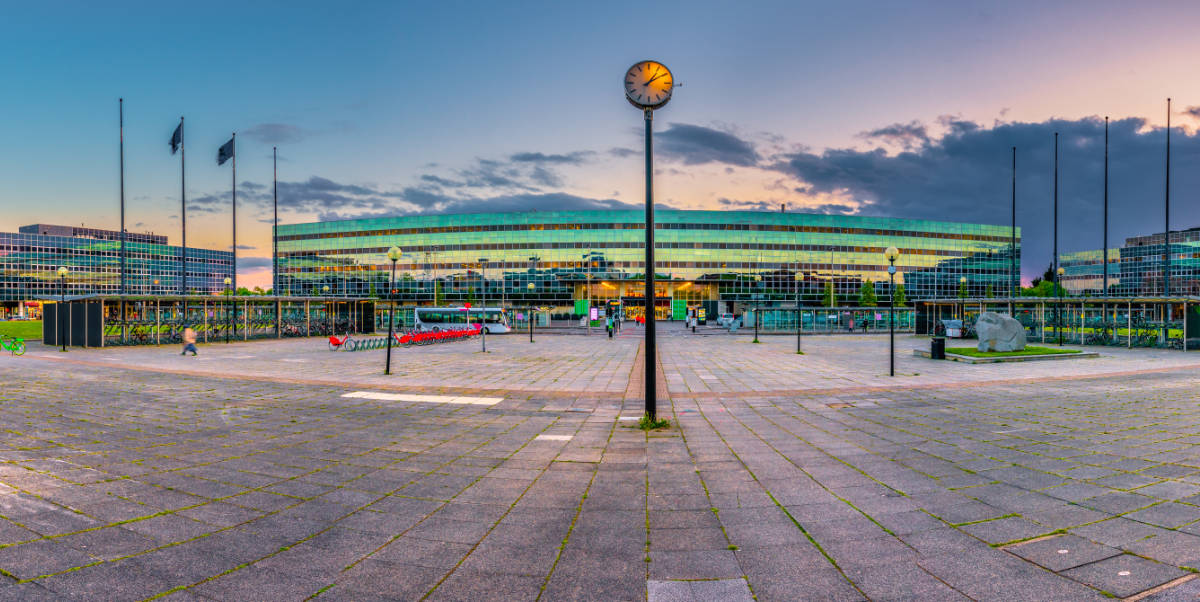
Milton Keynes The Biggest Third Wave Town In England
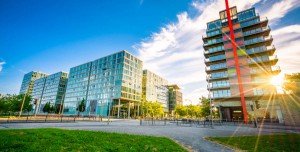
Image: ajor Pawel/Shutterstock.com
Milton Keynes has a bigger population than some cities have, but it doesn’t have city status yet. For all intents and purposes, it is still just a really big town. To be fair though, a full quarter of the area designated as MK is woodland. That’s no mean feat and, in this day and age, something to be exceptionally proud of. You go Milton Keynes, keep that woodland thriving!
Milton Keynes came about in the ’60s as one of the New Towns that the government built. In the most literal way, they removed the poor people from London and sent them to places like this. A few tactile landowners followed, of course. New businesses started up; new landlords made a pretty penny… but it was a sort of urban cleanse that nobody likes to talk about. They did this throughout the whole of the UK… and Milton Keynes was the biggest of them all.
So what should you do if you have to spend time here? What is there to do in this one-of-a-kind place? Of course we at Five Minutes Spare had to stick our noses in to find out…
Milton Keynes through time…
Way back before anyone decided to put people here, back, back, and then back some more; Neolithic people occupied the area. It’s not exactly known what they did there, but it’s imagined that it was good rural farmland for them. With the proximity of the woodland, it would have been a great place to make charcoal, hunt, and even fish. The river Great Ouse runs along the north of the city, acting as an effective wall if it is ever attacked.
As well as the Ouse, the River Ouzel runs through the leafy town. The corporation that developed it wanted to have a more natural place to live than the towns that came previously. Lots of attention was paid to retaining the forest feel. It’s actually a sweet idea… that those removed from London got to live a completely different, more rural lifestyle, just because they chose to move. It’s a good sentiment.
Settlements had been in the area of Milton Keynes for thousands of years. It is only 50 miles north and west of London. It would have been perfect farmland for those willing to travel a day or two to sell their wares. Although nowadays it has a population of around the 250,000 people mark; it wasn’t always so. In fact, Milton Keynes was made up of a handful of villages that were already in existence when the New Town was formed.
Some of these small settlements included:
- Bradwell – a 12th-century town that was already absorbing villages as it grew.
- New Bradwell and Bradwell Abbey – the first was built for railway workers, the second was built by the church.
- Broughton – which became a parish and is now a district of the New Town.
- Linford – a village that grew up around the fjord, Lin means ‘maple tree’.
- Stony Stratford – a 12th-century market town that grew up around a different fjord, Strat means ‘bridge’.
- Walton and Wilen – two small parishes from the 17th century that sported churches.
- Wolverton – the site of a 12th-century church
So to say there wasn’t history in the area would be wrong.
There were a reported 15 small villages in the area, inclusive of Loughton, Bletchley, and the lesser-known ancient village of Milton Keynes. You can guess who won the naming contest. The town was formed, and the rest is history. What we want to know is what it was like for that tiny village when a whole not-quite-a-city formed around it…
The Village of Milton Keynes
The church in Milton Keynes village was erected in 1330; however, parts of it were dated as far back as the 11th century. This means it was probably Anglo-Saxons, although the alignment of some bones found in 1992 meant that they were probably Christians. The bones were dated to 900 AD. So the history of the village begins with some Anglo Saxons, Christians, and a recorded rectory.
In 1086 the Domesday Survey recorded the village of Milton as a village in the hundred of Moulsoe and in Buckinghamshire. The Hundred’s were ways of splitting lands down into groups that were overseen by a thegn. It made royal rule easier, back in the day. The village is shown as having three landowners:
- Walter Gifford, who had 1 meadow and 1 plough
- William son of Ansculf, who had 1 villager, 5 smallholders, and one slave. You read that correctly. He also owned a meadow and a plough.
- Godric Cratel, who owned households containing 18 villagers, had 6 smallholders and owned six slaves. This made him around 5 pounds a year.
Although the owning of slaves is never a good thing; the history here is. You can read it in full (if you can read Old English) at the Open Domesday site.
The village remained a village; a cottage was recorded from the 13th century that had stylings and woodwork suggesting it was converted from an old hall. The much later discovery of a hoard of bronze age gold was made in the Milton Keynes area. It is possible that the Vikings had settlers here that built in the old Norse style. They did make a habit of burying their gold to prevent looters from stealing it.
To this day you can visit the Swan public house, which was built in the 16th or 17th century. The rest of the area still sports an array of cottages that were built in the 18th and 19th century. Reportedly, the old bus station was a smithy. You can still visit the Southside Farm in Milton Keynes, whose building dates back to the 14th century. It is one of the oldest working farms in Britain.
Famous People from Milton Keynes
Let’s take a break from all this history to indulge in a little ego-boosting for all those MK residents out there. That’s right; plenty of you have made it to the big time! Some of the best-known famous people to come out of Milton Keynes include:
- Christian Davis – Cricketer right-handed batsman who plays for Northamptonshire.
- Young Adult Fiction Writer Sarah Pinborough is from Milton Keynes. She has published over 20 novels and is award-winning!
- Emily Bergl – English born American actress best known for her role as Rachel Lang, in Carrie.
- Pro Racecar Driver Kazeem Manzur was born in MK.
- Several Pro footballers come from Milton Keynes, including Liam Kelly of Coventry and Harry Forrester of Orange County SC.
See! Milton Keynes have plenty of representatives who are out there, putting the New Town on the map! Ranker has a full list you can view here. Let’s get back to the history.
Modernising a Village
Throughout recorded history, the village only had two private owners. In the forties, it was bought by a corporation that later sold to the MK Development Corporation. The private owners were the Stafford Family, then later the Finch family. The latter used it as a sort of holiday home until the war.
The village was such a closed community that letting other people it would have been shellshock. By the time the corporations bought over it the 1910 schoolhouse had been knocked down to build two blocks of flats. When the MKDC got there, the smallholdings had been absorbed into four large farms and the rudimentary things that a village needed to exist. Suddenly there would have been developers everywhere… It must have been a sad time to be alive, to see that happen to your village.
The developers did take the villager’s opinions into consideration. They set a three-story limit outside the town centre so that no tower blocks would emerge. They wanted the economy to be self-sustaining, so they accounted for that by adding retail and commercial centres throughout. They made bigger leisure areas and merged the woodland with the (not-a) city.
The government put a lot of thought into their new town. They set it up so it could run itself. They wound the corporation up and it became the Borough of Milton Keynes in 74. A government partnership has control of it at the moment.
Reportedly they are doing well. Milton Keynes is one of the economically best-off towns in Britain. It scores highly time and time again – even during recessions. As one of the most northern cities in the south-east, it is close enough to London to be well managed. At the moment, MK stands as a shining example as to what can happen when a city is properly managed, planned, and organised. Milton Keynes is forward-focused and successful… and it might just still be there when the rest of our cities are faltering.
Fun Facts About Milton Keynes
Now that the serious stuff is out of the way, we wanted to dig out some fun facts about the town. Here are the Five-Minute Spare favourite fun things about MK:
- Nobody that lives and works in town is ever more than a full half mile away from a park or nature area. It was designed this way, making it a pleasant, less polluted place to live than cities of the same size.
- Milton Keynes contains more than 20 million trees. While the rest of us need to be planting more to make up for climate change, they are already miles ahead.
- The Red Bull Racing Formula 1 team HQ is in Milton Keynes. They are regular winners and attract lots of new talent into the sport.
- In WW2, the Bletchley region had a communications centre that operated on behalf of the army. They decoded intercepted messages here.
- The Milton Keynes based Open University has helped more than 1.6 million people achieve their degrees since 1971.
For more fun facts (and they are really interesting) you can visit the MK tourist board. If you do, make sure you come back to us afterwards to finish the story…
Wartime in Milton Keynes
Genuinely; we don’t know that much about it. It was all top secret. What we do know amounts to the totality of a documentary and a few reports. The BBC branded it the ‘secret war’ that went on in Milton Keynes. Apparently, its central location in proximity to several cities made it one of the best places to run and decode messages.
According to them; Wavendon Tower was the first radio tower in Britain that was intended to spread anti-Nazi propaganda. Freedom Stations, as they were then named, sprung up in a wave of other European countries as a result. They helped to fuel the resistance and inspire hope in occupied places.
Aspley Guise was home to many French who had managed to escape the Nazi occupation. It was supposed to be a town of temporary homes that kept the refugees separated from the local people. It didn’t work. Aspley Guise is now part of Milton Keynes.
Maryland College was an important site to both the British and the Americans. This was where the Brits printed all their propaganda materials, and also who and where the US turned for help after the bombing of Pearl Harbour. Nearby Paris House was also used as a hidey-hole for the king and queen, and other important nobles on the run from danger.
All of this was coupled with a network of decoding facilities within the area. It was rural, it was peaceful, it wasn’t lit up at night and it never got bombed. The Nazis, it seems, were bombing the wrong places.
Modern Times
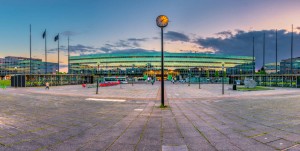
Imaage: Pajor Pawel/Shutterstock.com
The modern world sees MK with a thriving economy and a proud history of contributions. However, we still don’t know what you would do there if you were staying for a week or two…
Milton Keynes Attractions
If you happened to come here on holiday, what are the things you should take the time to see and do? Don’t worry; we’ve got your back.
The National Museum of Code Breaking Computing
Only in Britain would there be a museum celebrating the ability to solve a puzzle. Of course, we are kidding. The towns and villages in this area made a tremendous contribution to the war effort and it is only right that they have a museum to celebrate it.
If local history is more your thing then head to the Milton Keynes Museum. It gets more interesting with every year that passes. They celebrate the ongoing history of their town in a pretty special way. Even the video on the webpage is enough to tug heartstrings.
If neither of those museums tickles your fancy, then see the National Radio Centre in Bletchley Park. This little wooden hut is all that remains of the first-ever Freedom Radio station in Europe. It’s also home to the Radio Society of Great Britain, which have been in operation since 1913. You can learn a lot.
Affectionally known as the MK gallery, this artists destination displays works from around the world. It doesn’t do that much for local artists so there is a bit of negativity going on backstage there. If you want to avoid it all, head to Castle Galleries or Whitewall Galleries instead. They both score highly in local reviews.
Adventures!
There are three main places to have an indoor adventure in Milton Keynes. These are as follows…
Anyone who has ever wanted to skydive – but is chronically afraid of heights – will love this. MK has its very own indoor skydiving centre. They use a wind tunnel, so you get the feeling of skydiving without all that nasty vertigo (and danger). It’s sure to make a great day out.
While we are on the subject of places to have some fun in Milton Keynes; we should cover the Snozone. This place has an indoor ski slope that lets you learn how to snowboard if you so desire. Get out there, don’t be afraid to fall, and you will have the time of your life!
Third on our list of adventure-type attractions is the indoor rock-climbing walls at the Big Rock Hub are crazy good fun. Again, the indoors aspect takes away the danger and makes climbing more of a safe, fun hobby. You can also try your hand, arms, and legs, at bouldering here.
Outdoor Fun in Milton Keynes
As well as sightseeing and adventuring, there are loads of other things to do in Milton Keynes.
This place was home to the codebreakers during the Second World War. You can visit them and learn all about the past, the roll of honour, and the house itself. They are open daily, and you don’t need to go inside. The house and grounds themselves make for a lovely afternoon.
If golf is your game, then you are in luck! Milton Keynes has its own golf club in among all that woodland. There is a Go Ape nearby in Woburn Sands (it’s inside the Safari Park!), and yet another golf ‘centre’ at Abbey Hill. Legend has it that there are other treetop experiences scattered throughout the town… As well as equestrian centres, off-roading areas, and ballooning!
Depending on which part of town you are in, you will never be more than a short walk from one park or the other. Some of those you have to choose from include the Railway bridge at the Ouse Valley, The shorefront at Caldecotte Lake, and Campbell Park, close to the centre of town. Enjoy!
Other Notable MK Attractions
There are so many things to do here that we can’t cover them all. If you are spending more time here, then check out:
- Gulliver’s Land waterpark is great for the kiddies.
- Formula Fast Indoor Karting is great for team building events in MK.
- The Milton Keynes theatre always has a show to catch.
- Alpaca Evolution… Alpacas. Enough said.
So there is always something to do in Milton Keynes!
Where to Eat, Drink and Party in Milton Keynes?
The Grange is a great family food place in Milton Keynes that locals reckon deserves a Michelin Star. Other noteworthy eateries include the upmarket Italian; Nonna’s, and the Caribbean feast to be found in Turtle Bay. Turtle Bay is also reported to have excellent cocktails if you are making a night of it.
Be at One Cocktail bars have a place in Milton Keynes, and they are renowned for being able to mix up a drink or five. Maybe you just want a good, old-fashioned pint of bitters? You will find this in Ye Olde Swan. This marks a genuine old pub that existed before the New Town did.
For nights on the town, the best nightlife can be found in the Canon. The Eager Poet, a weirdly named club, comes in a close second.
How to Get There?
We have covered everything – but how do you get there?
By Road
Head north and west out of London. If you follow the M1 for fifty miles you will eventually hit Milton Keynes. The A5 will also get there.
By Rail
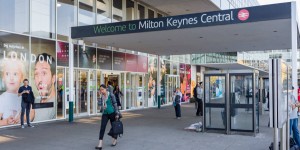
Image: Paul Maguire/Shutterstock.com
There are six train stations servicing the town with Milton Keynes Central Station obviously being the best if you want to get into is the one that will get you into the town centre. It is on the West Coast Line giving it a direct route into central London and good connections with the North and Scotland (you can get to both Glasgow & Edinburgh with a change of train or two). Wolverton & Bletchly are also on this line.
On a more local level, there is the Marston Vale Line which connects Milton Keynes with nearby Bedford. This is a community partnership line and only runs for 16.5 Miles (around 27.5km), however, it has three stations on it Fenny Stratford, Bow Brickhill and Woburn Sands which not only boosts the commuter belt but offers rail links into the Midlands with Bedford having good links with Leicester. From a visitor point of view, it also offers a rather scenic journey which can be added to the itinerary.
By Air
Luton airport is the nearest place to Milton Keynes you can fly into. It is about twenty miles away so you will need to link by bus or train.
By Sea
Milton Keynes isn’t on the water, but if you have a barge, the River Oust runs right along through town.
Got Five Minutes?
If you enjoyed this local guide and want more then you’re not alone. 70% of our readers come back for more. We made that figure up: but you can still benefit from our other articles. You can find them back at Five Minutes Spare. Until then? Have some pride in your hometown Milton Keynes, you guys have a better history than most.
